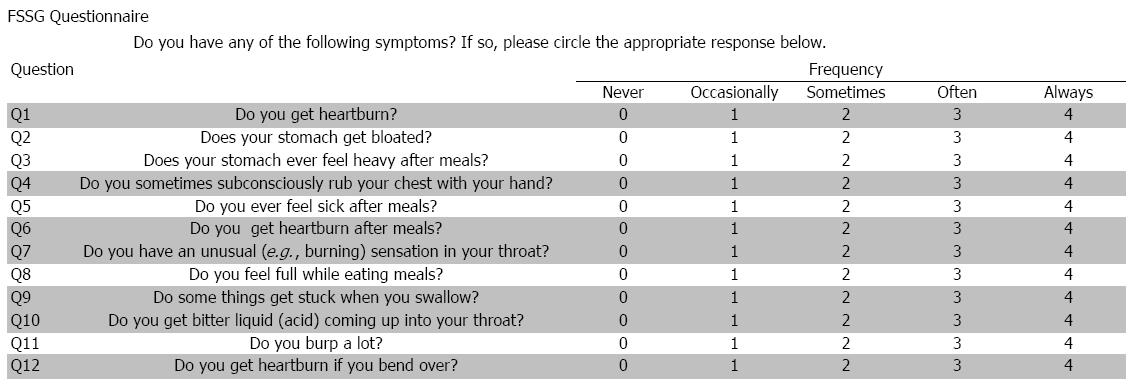Copyright
©The Author(s) 2015.
World J Gastroenterol. Jul 14, 2015; 21(26): 8170-8177
Published online Jul 14, 2015. doi: 10.3748/wjg.v21.i26.8170
Published online Jul 14, 2015. doi: 10.3748/wjg.v21.i26.8170
Figure 1 Frequency Scale for Symptoms of gastroesophageal reflux disease questionnaire.
Of the 12 FSSG questions, 7 questions (Q1, Q4, Q6, Q7, Q9, Q10, and Q12; shaded lines) deal with acid reflux symptoms, and the other 5 questions (Q2, Q3, Q5, Q8, and Q11, white lines) ask about dysmotility symptoms. FSSG: Frequency Scale for Symptoms of gastroesophageal reflux disease.
- Citation: Maekita T, Kato J, Enomoto S, Yoshida T, Utsunomiya H, Hayashi H, Hanamitsu T, Inoue I, Maeda Y, Moribata K, Muraki Y, Shingaki N, Deguchi H, Ueda K, Iguchi M, Tamai H, Ichinose M. Japanese apricot improves symptoms of gastrointestinal dysmotility associated with gastroesophageal reflux disease. World J Gastroenterol 2015; 21(26): 8170-8177
- URL: https://www.wjgnet.com/1007-9327/full/v21/i26/8170.htm
- DOI: https://dx.doi.org/10.3748/wjg.v21.i26.8170









